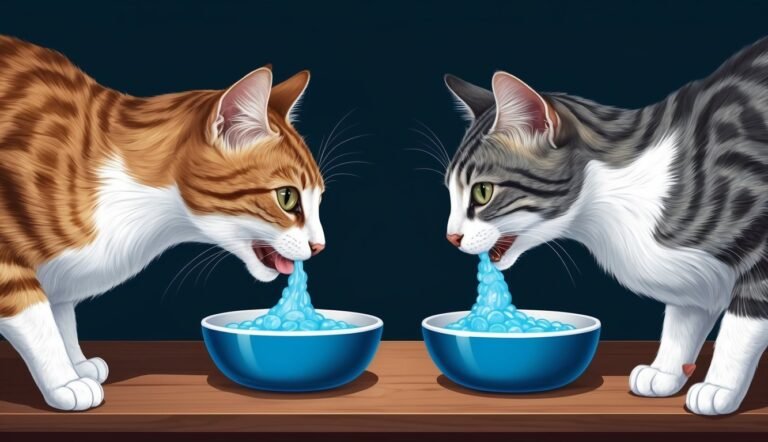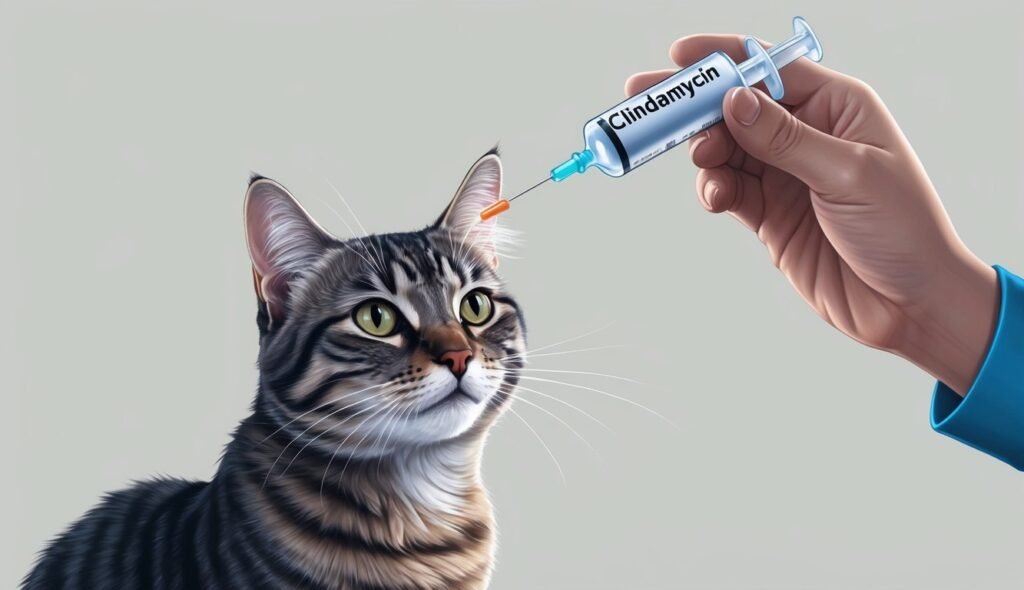Lactulose is a liquid medication that veterinarians often prescribe for cats to address issues like constipation.
This treatment works by softening the stool and promoting regular bowel movements, making it a valuable option for your feline friend’s digestive health.
If you’re a cat owner facing the challenges of constipation or elevated ammonia levels in your pet, knowing how lactulose can help is essential.
Understanding proper administration and dosage can make a significant difference in your cat’s comfort.
While generally safe, it’s important to be aware of potential side effects and precautions to ensure a smooth experience with this treatment.
Getting your cat back to normal can be straightforward with the right information.
Explore how lactulose can benefit your pet and find practical tips on usage, administration, and everything in between.
Key Takeaways
- Lactulose effectively treats constipation in cats.
- Proper dosage and administration are crucial for safety and effectiveness.
- Awareness of side effects ensures a better treatment experience for your cat.
What Is Lactulose?
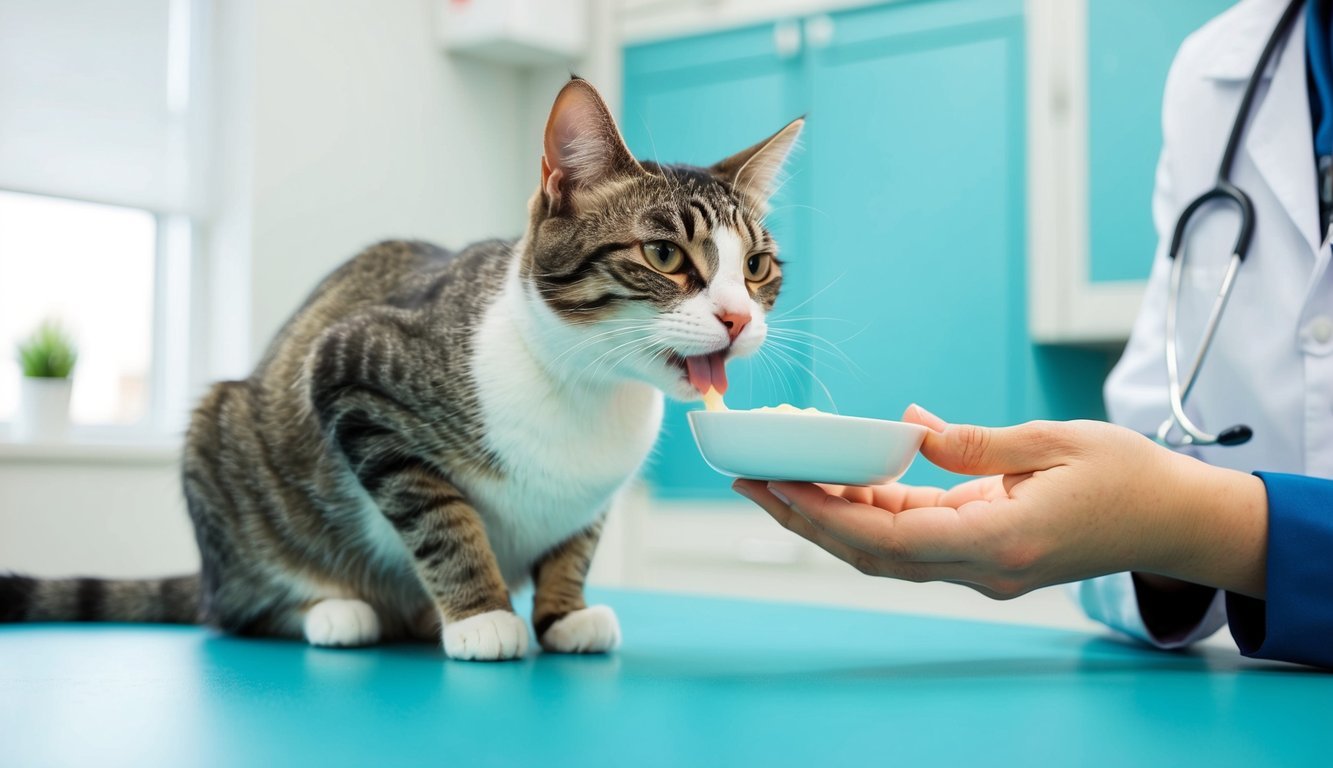
Lactulose is a synthetic sugar used primarily as an osmotic laxative.
It is beneficial for managing certain health conditions in cats, particularly those related to the liver.
It helps soften stools and reduce intestinal ammonia levels.
Lactulose Overview
Lactulose is an oral solution or liquid medication that acts as a laxative.
It is often prescribed for conditions like constipation and hepatic encephalopathy in cats.
This medication works by drawing water into the colon, which increases moisture in the stool, making it easier to pass.
Cats may encounter lactulose in various forms, such as syrup or crystal granules.
It’s important to follow the dosage guidelines given by your veterinarian to ensure safe and effective treatment.
How Lactulose Works
As an osmotic laxative, lactulose influences the osmotic pressure in the intestines.
When ingested, it goes undigested until it reaches the colon.
Once there, it is fermented by bacteria, leading to the production of low-molecular-weight acids.
This process helps to reduce ammonia absorption from the gut into the bloodstream.
Consequently, lactulose can effectively lower blood ammonia levels, which is particularly crucial for cats with liver dysfunction.
Types of Lactulose
Lactulose typically comes in two main types: liquid solution and crystal granules.
The liquid solution is commonly dispensed in bottles and is easy to measure and administer using a syringe.
Crystal granules may need to be mixed with water or food to ensure your cat takes the full dose.
Both formulations are effective but require different administering techniques.
Always consult your vet for the appropriate type and form based on your cat’s health needs.
The Importance of Treating Constipation in Cats
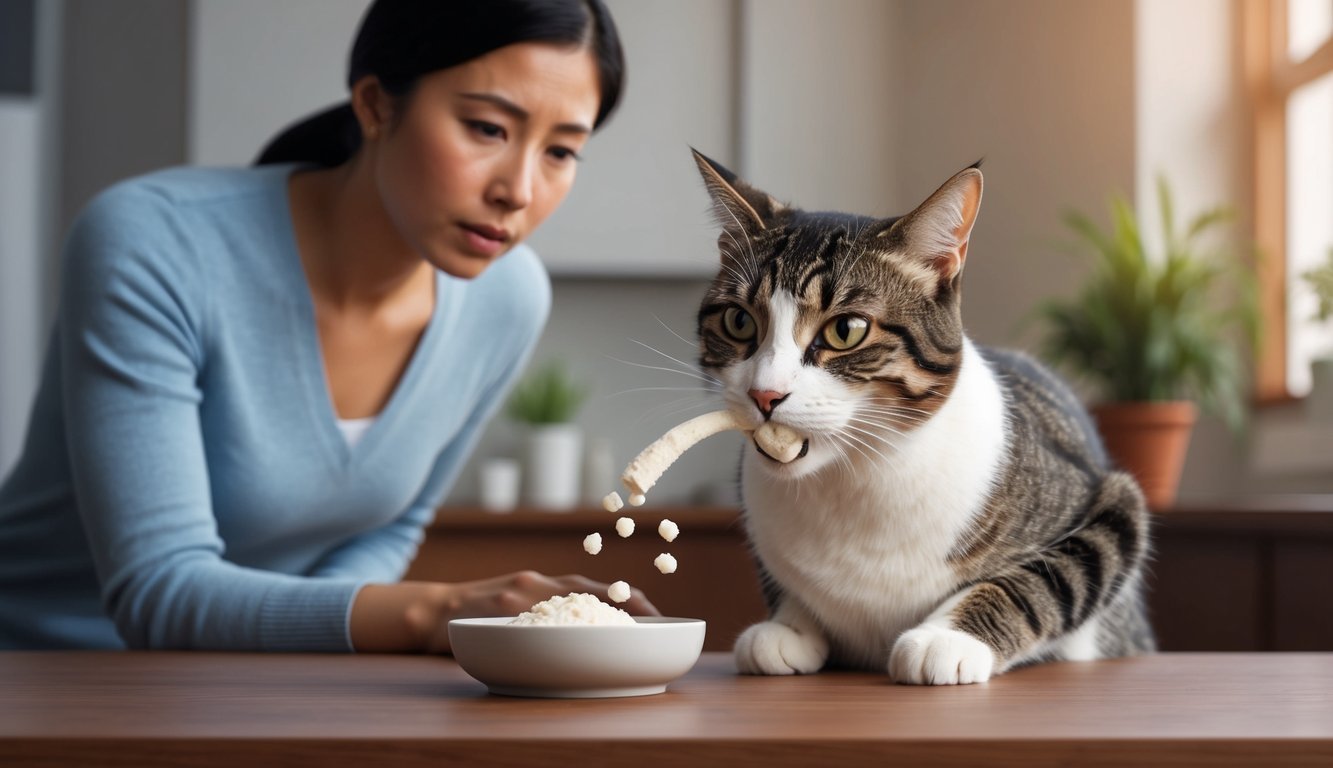
Recognizing and addressing constipation in your cat is crucial for maintaining their health.
Left untreated, constipation can lead to serious complications, affecting your cat’s quality of life.
Understanding Feline Constipation
Feline constipation occurs when a cat experiences infrequent or difficult fecal movements, often resulting in hard, dry stools.
Various factors contribute to this condition, including dehydration, lack of dietary fiber, and stress.
Your cat may also be at risk due to underlying health issues, such as megacolon or certain medications.
Symptoms of constipation can include:
- Straining to defecate
- Lethargy
- Loss of appetite
- Abdominal discomfort
Regular monitoring of your cat’s bowel movements helps in identifying constipation early.
Providing a balanced diet, ensuring access to fresh water, and encouraging exercise can play a significant role in preventing this issue.
Consequences of Untreated Constipation
Ignoring constipation in your cat can lead to several serious consequences.
Chronic constipation may result in megacolon, a condition where the colon becomes enlarged and loses its ability to function effectively.
In such cases, your cat may require more aggressive treatment, possibly including surgery.
Additionally, prolonged constipation can cause significant discomfort and pain for your pet.
This affects their behavior, appetite, and overall well-being.
You may notice your cat becoming withdrawn or irritable, which is not typical of their usual behavior.
Regular vet check-ups and open communication about your cat’s bowel habits can help catch any issues before they escalate.
By treating constipation promptly, you can prevent more severe health problems and ensure your cat leads a happy, healthy life.
Using Lactulose for Feline Constipation
Lactulose is a popular option when it comes to alleviating constipation in cats.
Understanding when and how to use it is essential for your cat’s health and comfort.
When to Use Lactulose
You should consider using lactulose if your cat is experiencing constipation.
Signs include straining to defecate, infrequent bowel movements, or discomfort while in the litter box.
Lactulose acts as a stool softener and works by drawing water into the intestines.
This increases moisture in the stool, making it easier for your cat to pass.
It’s often recommended for cats that have had previous gastrointestinal issues or those on certain medications that may contribute to constipation.
Always consult your veterinarian for advice tailored to your cat’s specific condition and health history.
Administering Lactulose
Lactulose typically comes in a liquid syrup form, making it easy to administer.
The standard dosage for cats is about 1-3 milliliters per 10 kilograms of body weight.
For smaller or average-sized cats, doses usually range from 0.5 to 1 milliliter.
You can administer the syrup using a syringe. Hold your cat gently, and place the syringe in the side of their mouth.
Depress the syringe slowly to allow your cat to swallow comfortably.
Always ensure that your cat does not choke.
Monitor your cat for side effects such as gas or stomach discomfort, and adjust the dosage as directed by your veterinarian.
Regular follow-ups are important to assess the effectiveness of the treatment in managing your cat’s constipation.
Proper Dosage and Administration
Getting the right dosage and understanding how to administer lactulose is essential for your cat’s health.
This section will guide you through the dosage guidelines and various methods of administration.
Dosage Guidelines
When determining how much lactulose to give your cat, specific guidelines can help.
A general recommendation is 400 mg of lactulose per kg of body weight per day.
This usually translates to about 0.6 ml of lactulose per kg.
For mild constipation, an initial dose of 0.5 ml per pound of body weight is often advised.
If your cat is larger or overweight, doses can go up to 1-2 ml.
Remember to divide the total daily dose into two or three smaller doses for best results.
Adjust as needed based on your veterinarian’s advice and your cat’s response to the treatment.
Methods of Administration
Proper administration of lactulose is key to its effectiveness.
Here are some common methods:
-
Syringe Directly in Mouth: Using a syringe, gently squirt the dose into your cat’s mouth, aiming for the side to avoid choking.
-
Mix with Food: You can mix the lactulose into your cat’s wet food. Make sure they eat the whole portion to get the full dose.
-
Allow Licking: Place the syringe tip near your cat’s mouth and allow them to lick the medication off.
Monitor your cat after administration for any signs of discomfort or adverse reactions.
Following these methods will help ensure that your cat receives the lactulose effectively.
Potential Side Effects and Precautions
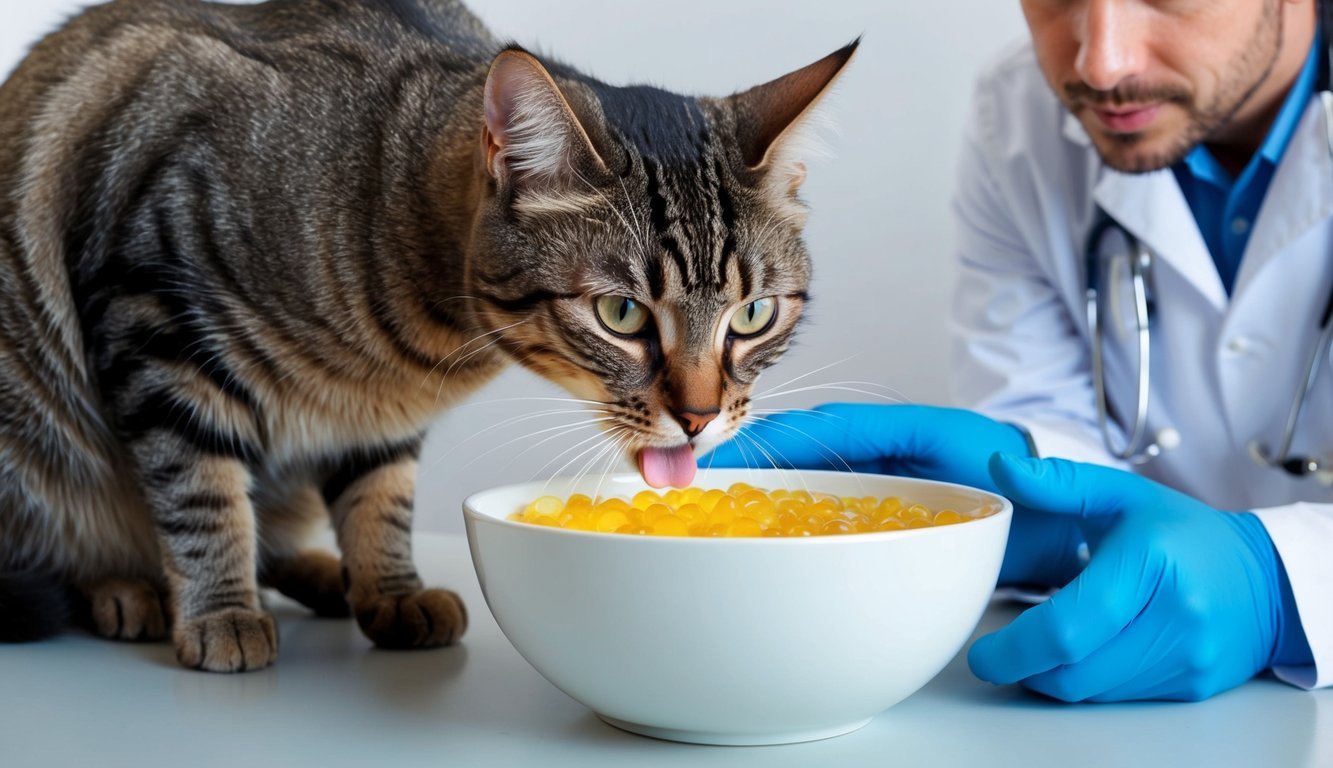
When considering lactulose for your cat, it’s essential to be aware of potential side effects and the precautions necessary to ensure their safety and comfort.
This medication can affect each cat differently, so monitoring your cat for adverse reactions is crucial.
Common Side Effects
The most commonly reported side effects of lactulose in cats include:
- Diarrhea: Some cats may experience loose stools or diarrhea, especially if the dosage is too high.
- Gas: You might notice increased flatulence or gas. This can lead to discomfort for your cat.
- Bloating: Some cats can experience abdominal distention, which may be uncomfortable.
- Abdominal Cramping: Mild cramping can occur due to heightened gastrointestinal activity.
If you notice these symptoms, it’s important to monitor your cat closely.
While these side effects can be common, they may also indicate that the dosage needs adjustment.
Managing Side Effects
To minimize side effects, start with a lower dose of lactulose.
This gradual increase allows your cat’s digestive system to adjust better.
Here are some tips you can follow:
- Adjust Dosage: Consult your veterinarian to find the appropriate amount for your cat.
- Hydration: Ensure your cat has plenty of fresh water. Dehydration can worsen gastrointestinal side effects.
- Diet Monitoring: Consider adjusting your cat’s diet to support digestive health while using lactulose.
Keep an eye on your cat after administering the medication.
If side effects persist or worsen, it may be time to take action.
When to Contact Your Veterinarian
It’s vital to communicate with your veterinarian if you notice any worrying symptoms.
Contact them if your cat experiences:
- Severe Diarrhea: Prolonged or severe diarrhea can lead to dehydration, which is a serious concern.
- Persistent Gas or Bloating: If these symptoms don’t subside or seem to be causing distress.
- Signs of Dehydration: Look for symptoms such as lethargy, dry gums, or excessive thirst.
Your veterinarian can help you determine the best course of action, whether that means adjusting the dosage or considering alternative treatments.
Regular check-ins will help keep your cat healthy and comfortable while using lactulose.
Special Considerations for Lactulose Treatment
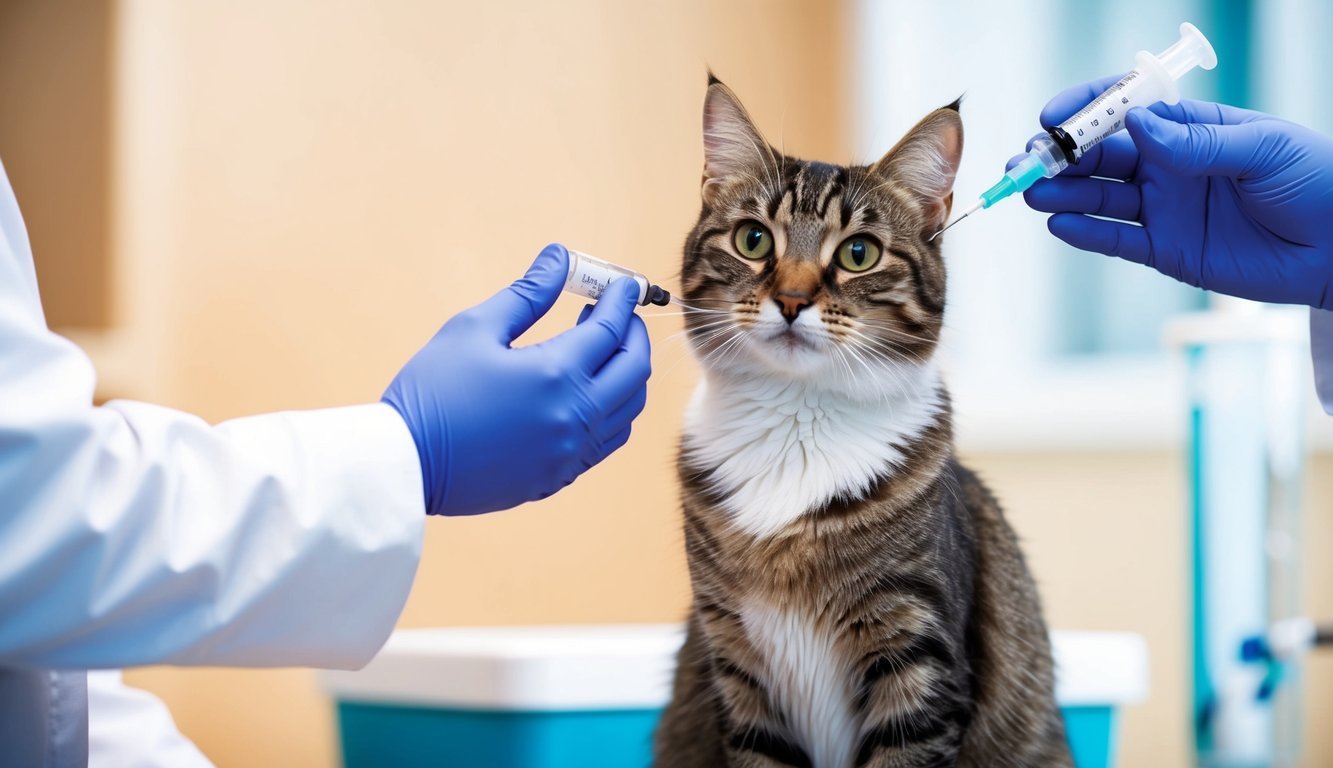
When using lactulose for your cat, it’s important to consider its specific applications, potential interactions with other medications, and its role in managing liver dysfunction.
This ensures effective treatment and the well-being of your pet.
Lactulose and Hepatic Encephalopathy
Lactulose plays a crucial role in treating hepatic encephalopathy.
It works by reducing ammonia levels in the bloodstream, which can build up during liver failure.
Consider the following points:
- Dosage: For hepatic encephalopathy, the typical dose is 1-3 milliliters per 10 kilograms of body weight.
- Frequency: Administration can range from every 6 to 8 hours, depending on your cat’s needs and response.
- Monitoring: Regularly check your cat’s ammonia levels to ensure the treatment is working effectively.
Interaction with Other Medications
Lactulose can interact with certain medications, which may affect its efficacy.
Be particularly cautious when combining it with:
- Antacids: These can alter the acid-base balance in the gut, making lactulose less effective.
- Neomycin: This antibiotic can also reduce the ammonia-reducing effects of lactulose, potentially decreasing its benefit.
Always consult your veterinarian about current or planned medications to avoid interactions that could interfere with treatment.
Lactulose in Cats with Liver Dysfunction
In cats suffering from liver dysfunction, lactulose is often prescribed to manage complications like hyperammonemia.
The medication helps by:
- Decreasing Ammonia Production: It prevents the absorption of ammonia from the intestine into the bloodstream.
- Stool Softening: This helps facilitate bowel movements, providing additional comfort for your cat.
Be aware that not all cats respond the same way to lactulose.
Factors like age, weight, and overall health may influence its effectiveness, so ongoing assessment is key.
Understanding the Impact of Lactulose on Cat Health
Lactulose plays a significant role in maintaining feline health, especially for cats suffering from constipation.
It can affect gut flora and has implications for long-term use, both of which are essential considerations for your cat’s well-being.
Lactulose and Gut Flora
Lactulose is a non-absorbable sugar that alters osmotic pressure in the intestines, helping to retain water and soften the stool.
This effect is crucial for alleviating constipation in cats.
However, lactulose also influences colonic bacteria.
While it can promote beneficial bacteria growth, it may lead to increased gas production and flatulence in some cats.
Balancing the gut flora is vital for your cat’s digestive health.
It ensures that it’s not just about relief from constipation but maintaining a healthy gut environment.
Long-Term Use and Cat Health
Using lactulose long-term can bring some challenges.
Your cat might become dependent on the medication, and constipation may worsen once treatment stops.
With extended use, monitor for signs like diarrhea or lethargy, as excessive lactulose can disrupt the digestive balance.
Side effects such as stomach dilation can occur, so regular vet check-ins are crucial.
Consider offering dietary changes or additional fiber sources alongside lactulose to support gut health and minimize risks associated with long-term usage.
Frequently Asked Questions
When considering lactulose for your cat, it’s natural to have questions about its use, effectiveness, and potential side effects.
Here are some commonly asked questions to help you make informed decisions.
What are the common side effects when giving lactulose to cats?
Common side effects of lactulose in cats can include diarrhea, bloating, and gas.
Some cats may also experience cramps or discomfort.
If you notice these symptoms persisting or worsening, consult your veterinarian.
What’s the recommended dosage of lactulose for an average-sized cat?
For an average-sized cat, the typical starting dosage is about 1-2 ml of lactulose once or twice daily.
Your vet may adjust the amount based on your cat’s specific needs and condition, so it’s best to follow their guidance.
How long does it usually take for lactulose to start working in cats?
Lactulose usually begins to work within 24 to 48 hours of administration.
However, the time frame can vary based on individual factors, including your cat’s overall health and diet.
Can I safely give my cat lactulose that is intended for human use?
Yes, you can give your cat human-grade lactulose, as long as the formulation does not contain any additional ingredients that might be harmful to cats.
Always check labels and consult your vet before use.
Is it better to use lactulose or MiraLAX for my cat’s constipation?
Both lactulose and MiraLAX are effective for managing constipation, but they work differently.
Lactulose is a larger molecule that helps draw water into the intestines, while MiraLAX is an osmotic laxative.
Your veterinarian can help determine which is better for your cat’s specific situation.
Are there any concerns with using lactulose for my cat over a long-term period?
Using lactulose long-term can lead to dehydration or electrolyte imbalance if not monitored closely.
Make sure to have regular check-ups with your vet to ensure that your cat remains healthy while on this medication.

